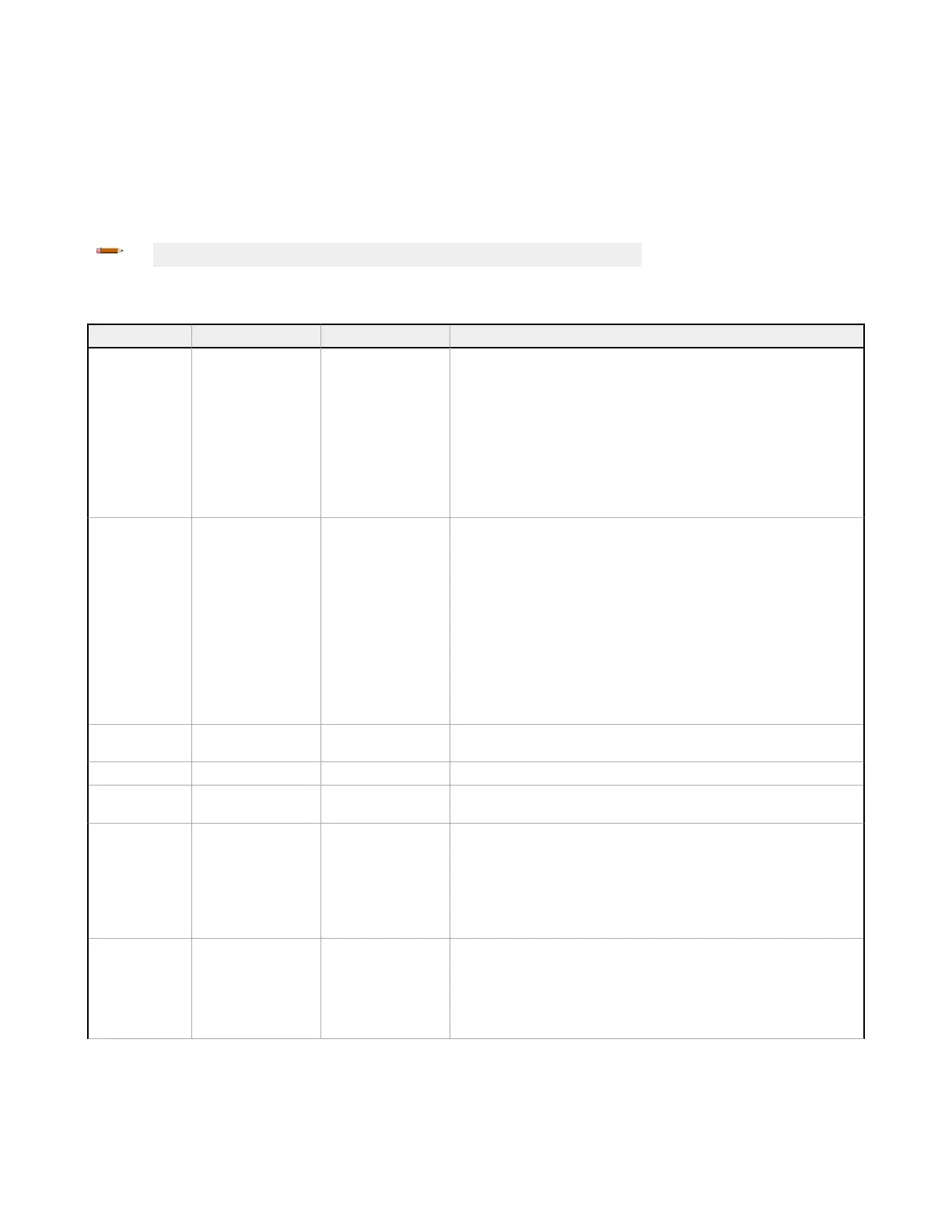• A loose or open connection
•
An exceeded operational time limit
• A power drop
• An overtemperature condition
When a fault is detected, a message describing the fault displays in the Fault Diagnostics menu (LCD models). For models
not equipped with an LCD, use the Live Mode tab in the Software on a PC connected to Safety Controller with the SC-
USB2 cable. Fault diagnostics are also available over the network. An additional message may also be displayed to help
remedy the fault.
Note: The fault log is cleared when power to the Safety Controller is cycled.
13.4.1 XS/SC26-2 Fault Code Table
Fault Code Displayed Message Additional Message Steps to resolve
1.1 Output Fault
Base Module or Solid
State Module
Check for shorts
Relay Module
n/a
Base Module or Solid State Module
A Safety Output appears On when it should be Off:
•
Check for a short to the external voltage source
• Check the DC common wire size connected to the Safety Output
loads. The wire must be a heavy-gauge wire or be as short as possible
to minimize resistance and voltage drop. If necessary, use a separate
DC common wire for each pair of outputs and/or avoid sharing this DC
common return path with other devices (see
Common Wire Installation
on page 51)
Relay Module
• Replace Relay module
1.2 Output Fault
Base Module or Solid
State Module
Check for shorts
Relay Module
n/a
Base Module or Solid State Module
A Safety Output is sensing a fault to another voltage source while the output is
On:
• Check for a short between Safety Outputs
• Check for a short to the external voltage source
• Check load device compatibility
• Check the DC common wire size connected to the Safety Output
loads. The wire must be a heavy-gauge wire or be as short as possible
to minimize resistance and voltage drop. If necessary, use a separate
DC common wire for each pair of outputs and/or avoid sharing this DC
common return path with other devices (see
Common Wire Installation
on page 51)
Relay Module
• Replace Relay module
1.3 – 1.8 Internal Fault -
Internal failure—Contact Banner Engineering (see
Repairs and Warranty Service
on page 155)
1.9 Output Fault Internal Relay Failure • Replace Relay module
1.10 Output Fault Check Input Timing
Sequence timing error:
• Perform a System Reset to clear the fault
2.1 Concurrency Fault Cycle Input
On a dual-channel input, or a complementary input, with both inputs in the Run
state, one input went to the Stop state then back to Run.
On a dual-complementary input, with both pairs of inputs in the Run state, one
pair of inputs went to the Stop state then back to Run.
•
Check the wiring
• Check the input signals
• Consider adjusting the debounce times
2.2 Simultaneity Fault Cycle Input
On a dual-channel input, or a complementary input, one input went into the Run
state but the other input did not follow the change within 3 seconds.
On a dual-complementary input, one pair of inputs went into the Run state but
the other pair of inputs did not follow the change within 3 seconds.
•
Check the wiring
• Check the input signal timing
XS/SC26-2 and SC10-2 Safety Controllers
148 www.bannerengineering.com - Tel: + 1 888 373 6767
